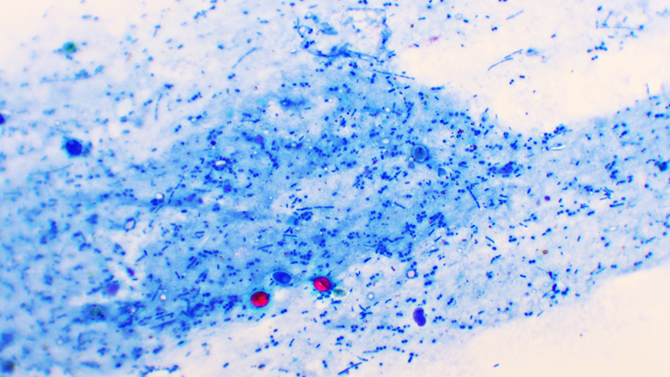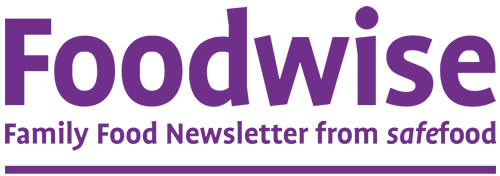Laboratory detection of Cryptosporidium parvum in foodstuffs - an inter–laboratory evaluation study

- Project start date: 1 July 2003
- Project status: Completed
- Project type: Food safety
- Discipline: Microbiology and food hygiene
- Author/s: Dr John Moore, Northern Ireland Public Health Laboratory, Dr Fiona Kenny, Sligo Public Health Laboratory
- Collaborator/s: Single supplier
Research objective
The objective of this project was to develop and optimise a protocol for detecting Cryptosporidium parvum, an emerging pathogen, in vegetables, specifically lettuce. The research aimed to establish a reliable method for routine laboratory testing to assess the prevalence of this parasite in the food chain. By evaluating over one thousand samples of locally grown lettuce, the project sought to determine the actual risk posed by Cryptosporidium parvum and to provide insights for improving food safety measures among horticultural producers.
Outputs
Research report
- Title: Laboratory detection of Cryptosporidium parvum in foodstuffs - an inter–laboratory evaluation study
- Date: 9 September 2004
- Summary: Unpublished report. See peer-reviewed articles below.
- Findings:
- Prevalence: Cryptosporidium parvum was detected in 2% of the lettuce samples.
- Risk assessment: The occurrence rate was relatively low, but it indicated the potential for contamination.
- HACCP evaluation: The findings underscored the need for horticultural producers to review and improve their HACCP (Hazard Analysis and Critical Control Points) systems.
The research highlights the importance of maintaining rigorous food safety practices and improving detection methods to manage emerging pathogens effectively.
- Recommendations:
- Protocol development: Continue refining and standardising detection methods for Cryptosporidium parvum in vegetables.
- HACCP review: Encourage horticultural producers to evaluate and enhance their HACCP systems to mitigate the risk of contamination.
- Monitoring and prevention: Implement regular monitoring practices for Cryptosporidium parvum in the food supply chain to ensure ongoing food safety.
Other outputs
Peer-reviewed articles
Moore, J.E., Millar, B.C., Kenny, F., Lowery, C., Xiao, L., Rao, J.R., Nicholson, V., Watabe, M., Heaney, N., Sunnotel, O., McCorry, K., Rooney, P., Snelling, W.J. and Dooley, J.S.G., Detection of Cryptosporidium parvum in lettuce. Int. J Fd Sci & Tech, 42(4): 385-393, 2007.
Snelling, W.J., Rooney, P.J., Lowery, C.J., Dooley, J.S.G., Rao, J.R., Millar, B.C., Sunnotel, O., Xiao, L., Buckley, T., Moore, J.E., Improved monitoring of water-associated cryptosporidiosis in Ireland. Ir. Med. J. 100 (5): 454-455, 2007.
Sunnotel, O., Lowery, C.J., Moore, J.E., Dooley, J.S., Xiao, L., Millar, B.C., Rooney, P.J. and Snelling, W.J., Cryptosporidium. Lett. Appl. Microbiol., 43(1): 7-16, 2006.
Snelling, W.J., Xiao, L., Ortega-Pierres, G., Lowery, C.J., Moore, J.E., Rao, J.R., Smyth, S., Millar, B.C., Rooney, P.J., Matsuda, M., Kenny, F., Xu, J. and Dooley, J.S., Cryptosporidiosis in developing countries. J Infect Dev Ctries., 1(3): 242-56, 2007.
Sunnotel, O., Snelling, W.J., Xiao, L., Moule, K., Moore, J.E., Millar, B.C., Dooley, J.S. and Lowery, C.J., Rapid and sensitive detection of single cryptosporidium oocysts from archived glass slides. J Clin Microbiol., 44(9): 3285-91, 2006.
Shigematsu, M., Nagano, Y., Millar, B.C., Kenny, F., Lowery, C.J., Xiao, L., Rao, J.R., Nicholson, V., Watanabe, M., Heaney, N., Sunnotel, O., McCorry, K., Rooney, P.J., Snelling, W., Dooley, J.S., Elborn, J., Matsuda, M. and Moore, J., Molecular detection and identification of Cryptosporidium species in lettuce employiing nested small-subunit rRNA PCR and direct automated sequencing. Br J Biomed Sci., 64(3): 133-135, 2007.




